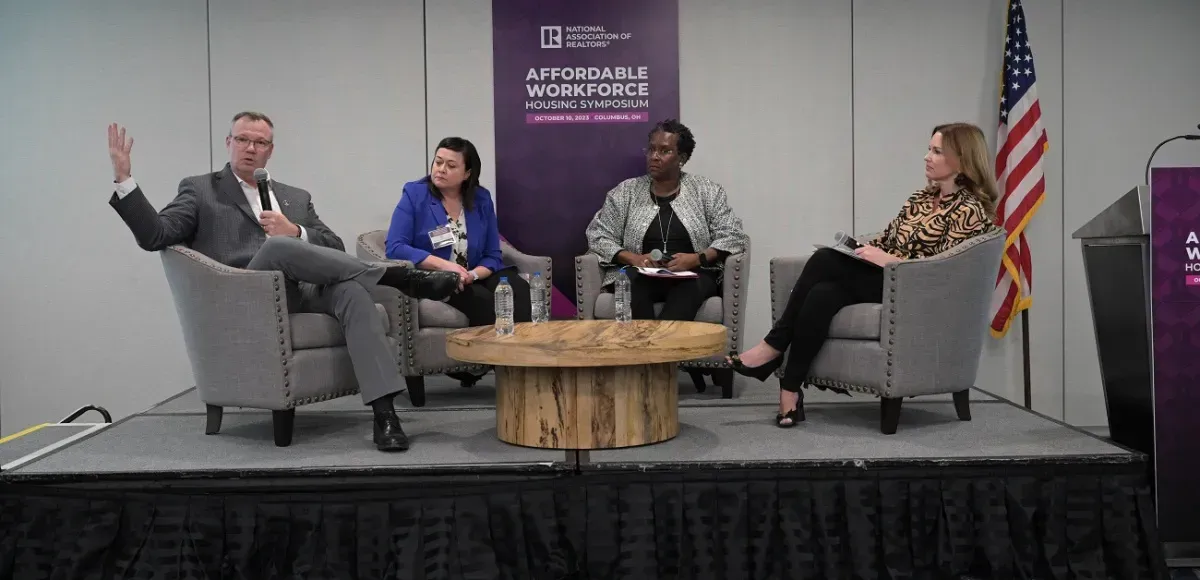News

The FBI’s warns that losses from real estate and rental scams are steadily increasing, reaching more than $396 million last year. Scammers are plotting elaborate schemes to dupe potential buyers, property owners and real estate professionals. One of their latest targets is vacant land, warns Charlie Lee, senior counsel and director of legal affairs at the National Association of REALTORS®, in the latest “ Window to the Law ” video. Scammers comb through public records and flag vacant parcels of land and properties that don’t have a mortgage or other lien, Lee says. Then, they’ll pose as the landowner, asking a real estate agent to list the property. “For the agent, the deal seems too good to pass up,” Lee says. “The seller is willing to sell below market value, the property generates great interest and they’ll quickly accept an offer—with a preference for a cash sale.” Real estate attorney Victor Petrescu recently warned of an uptick in scammers known as “ title pirates ,” who use fraudulent or forged deeds and other documents to convey title to a property. Often, these scams go undetected until after the money has been wired to the scammer in the fraudulent sale. “These scams have defrauded buyers out of great sums of money and left property owners and brokers and agents having to sort out the mess,” Lee says.

At the national level, housing affordability rose in January compared to the previous month, according to NAR’s Housing Affordability Index. Compared to the prior month, the monthly mortgage payment decreased by 3.3% while the median price of single-family homes declined by 2.4%, making home buying more affordable in January. The monthly mortgage payment decreased by $62 from last month. Compared to one year ago, affordability fell in January as the monthly mortgage payment climbed 39.3% and median family income rose by 6.4%. The effective 30-year fixed mortgage rate was 6.35% this January compared to 3.51% one year ago, and the median existing-home sales price rose 0.7% from one year ago. Mortgage rates have declined for three consecutive months.

While March 29 is designated as Mom and Pop Business Owners’ Day, let’s take a look at some facts about mom-and-pop landlords and small rental properties. In real estate, mom-and-pops are owners of small rental properties (1-4 units), and they do the day-to-day management of these properties. But being a mom-and-pop landlord can be challenging, especially when someone is starting out and doing everything from evaluating and purchasing rental properties, finding and screening tenants, collecting rents, keeping the books, dealing with taxes, observing local laws, and performing routine maintenance and repairs. Among 49.5 million rental housing units in the U.S., nearly 46% of them are small rental properties of 1-4 units. Over 70% of the small rental properties (1-4 units) are owned by individuals, and about 70% are managed by the same owners, defined as mom-and-pop landlords. The U.S. Census Bureau conducts the Rental Housing Finance Survey every three years. The main purpose of this survey is to learn about the financial health of rental properties. Specifically, it provides insight into the financial, managerial, and physical characteristics of rental properties nationwide by covering topics such as property configuration, ownership and management, rental income and expenses, financing, and capital improvements and expenses.

Did you know there are currently more households with pets than with children? According to the U.S. Census, the share of families with children living in their homes under the age of 18 has continued to decline. The share with children in 2022 stands at 40%, down from 48% in 2002. This is likely for two reasons: birthrates overall have been declining (outside of the increase in the last year), and there is a large share of Baby Boomer households whose children may have left the nest already.

To celebrate Galentine’s Day this year, we will take a page from Leslie Knope’s book from Parks and Recreation and celebrate single women buying homes. These women surpass all odds in the housing market and purchase homes with lower household incomes in an increasingly unaffordable housing market. Let’s look at how they stack up compared to their single male counterparts. Women have been second only to married couples in the home-buying market since NAR started data collection in 1981. This statistic is striking because up until 1974, women were legally prohibited from obtaining a mortgage without a co-signer. Before the passage of the Fair Housing Act’s prohibitions against “sex” discrimination in housing-related transactions, and the protections of the Equal Credit Opportunity Act, it was commonplace for a widow to need a male relative as a co-signer. Under federal law, women had no legal recourse for this or any other lending discrimination. In 1981, 73% of home buyers were married couples, 11% were single women, and 10% were single men. Today those shares stand at 61% married couples, 17% single women, and 9% single men. The highest share of single women buyers was in 2006, when the share stood at 22%. Between 2016 and 2022, the share of single women has been between 17% to 19%. In 2010, the percentage of single men rose to a high of 12% but has stayed between 7% to 9% of buyers in recent years.The body content of your post goes here. To edit this text, click on it and delete this default text and start typing your own or paste your own from a different source.







